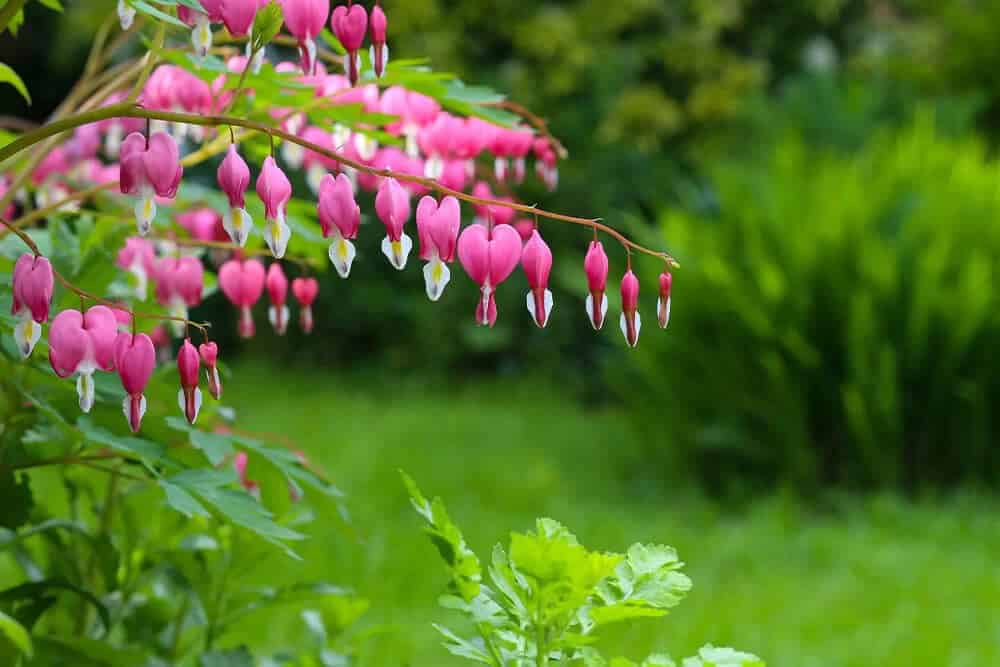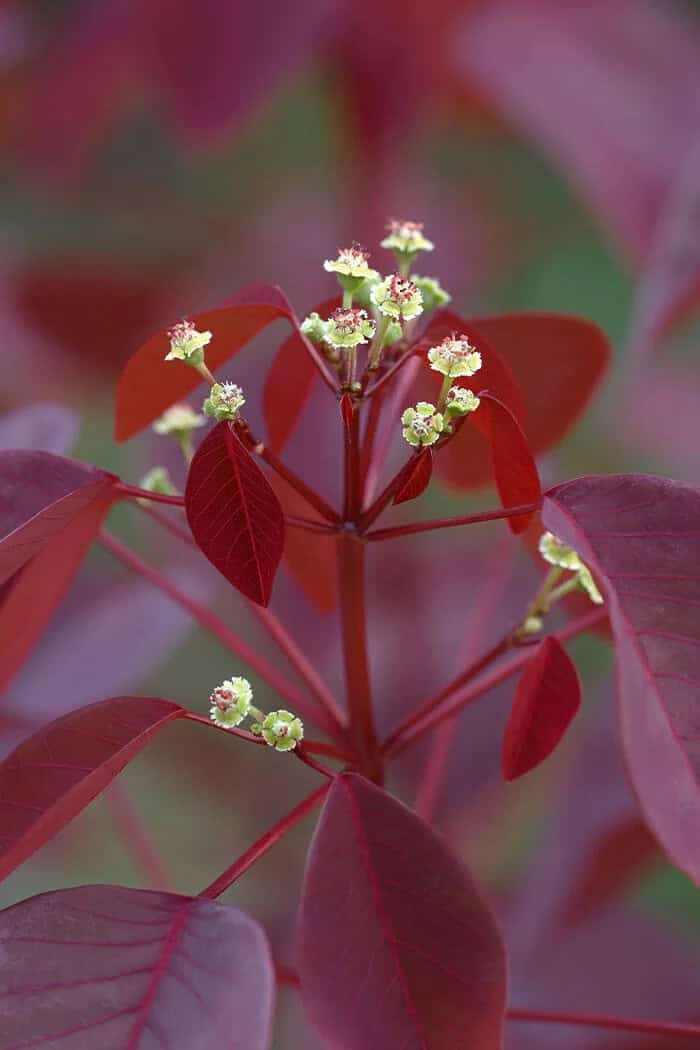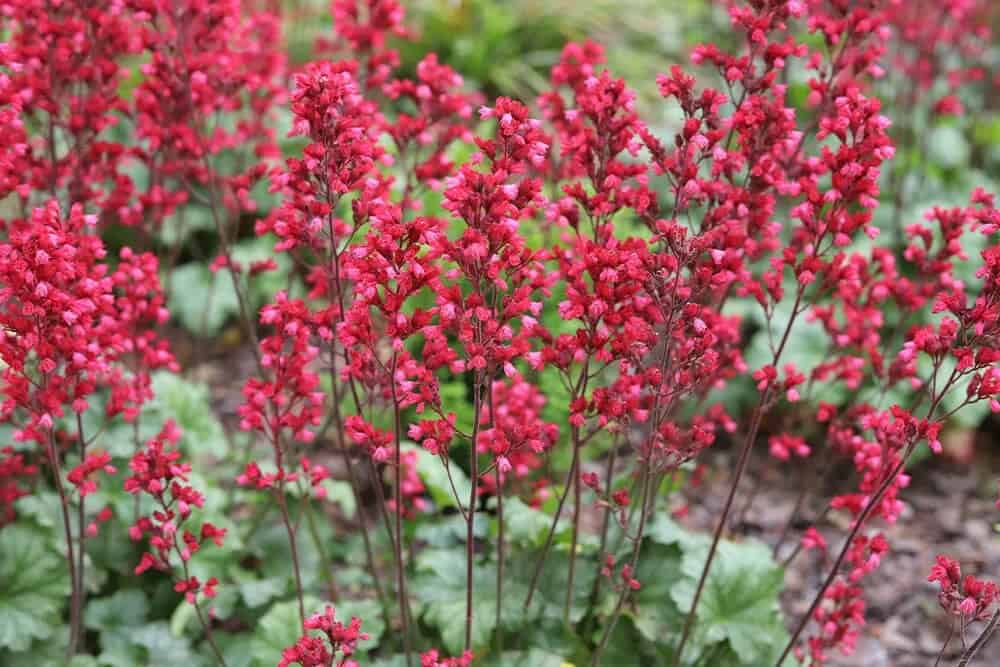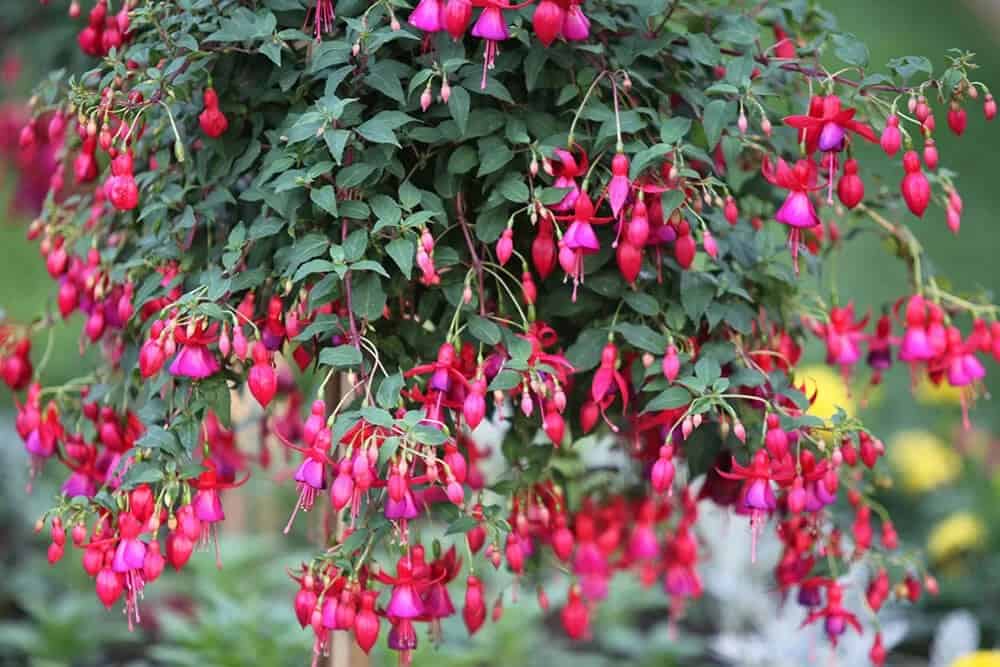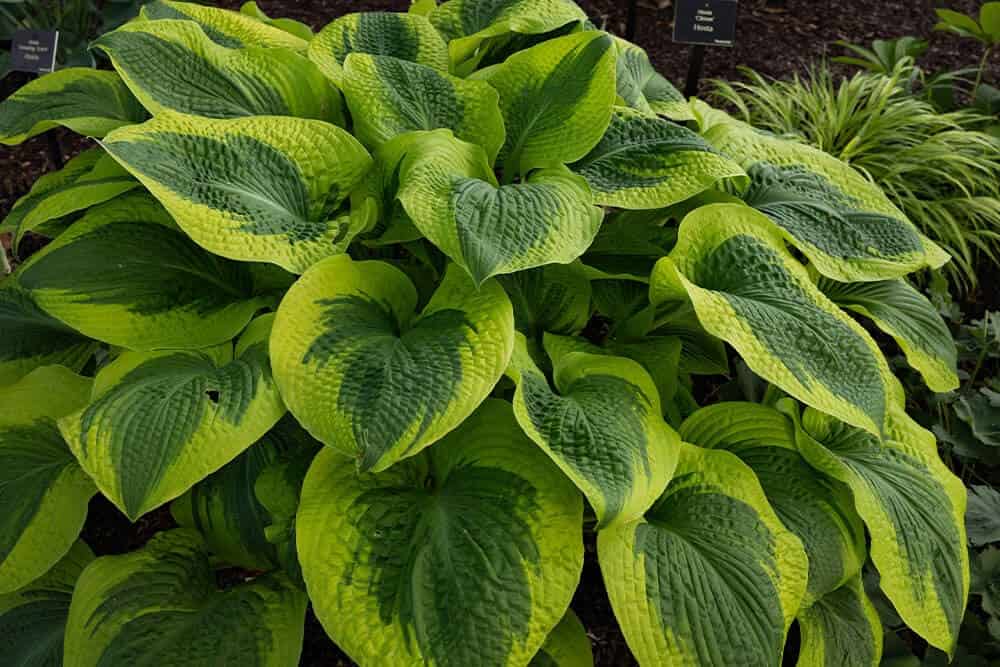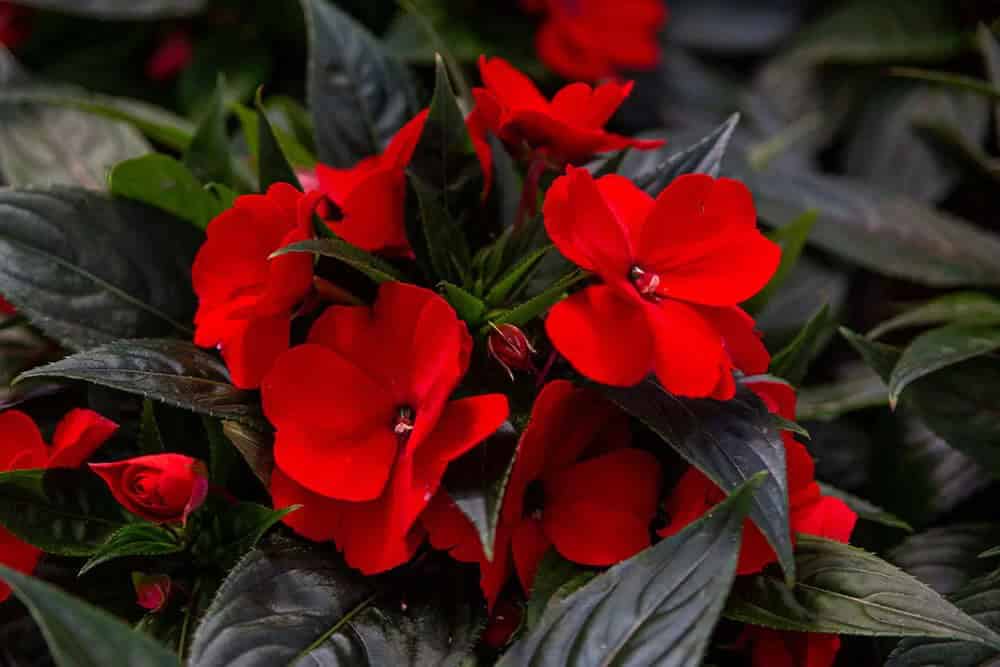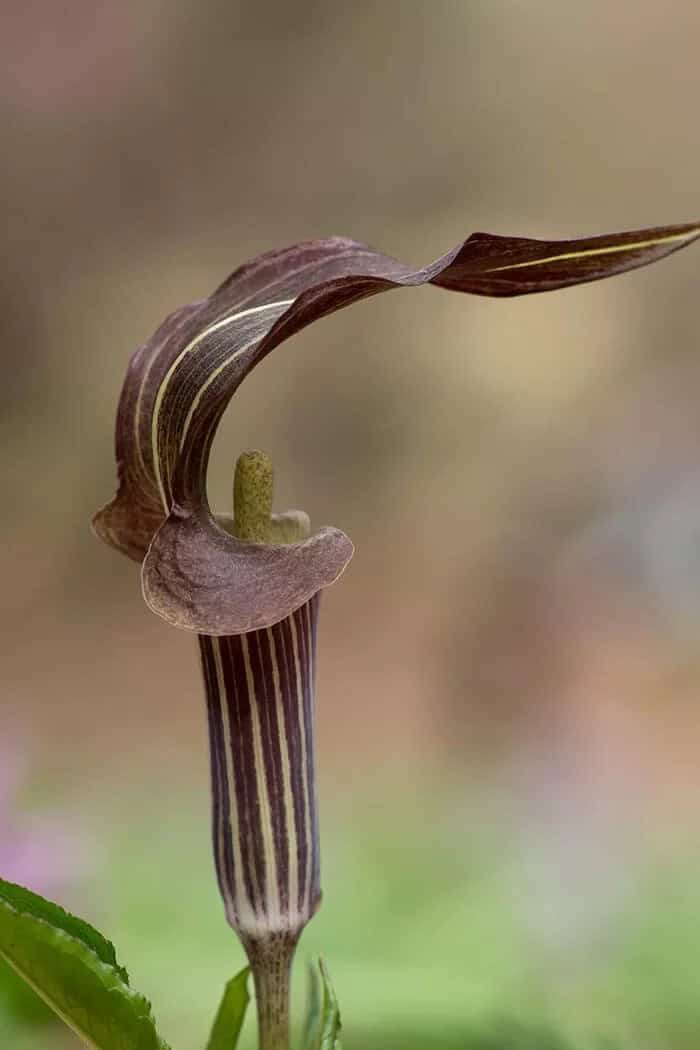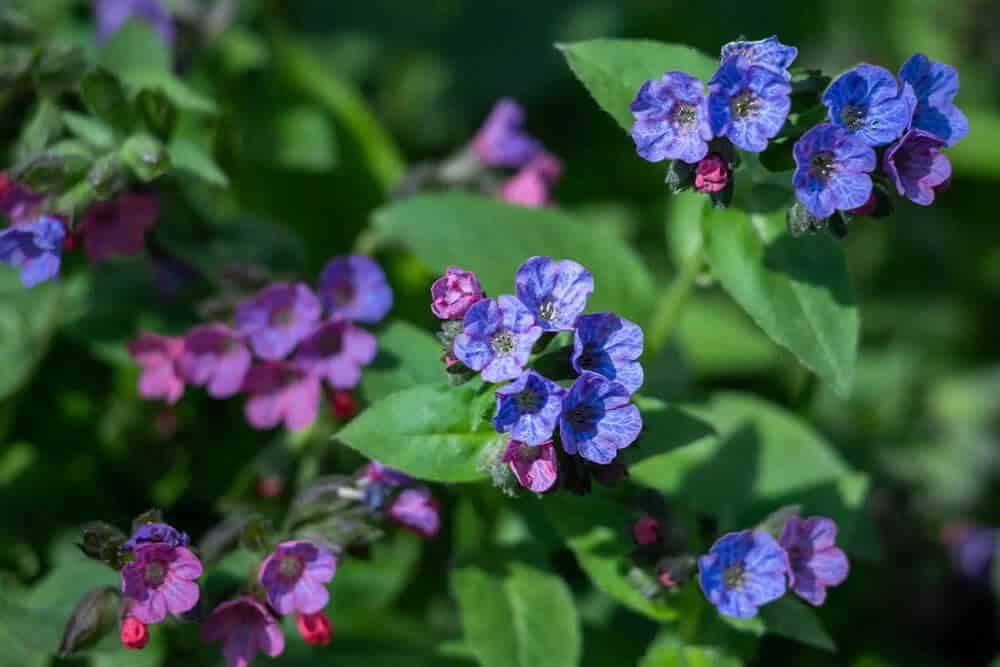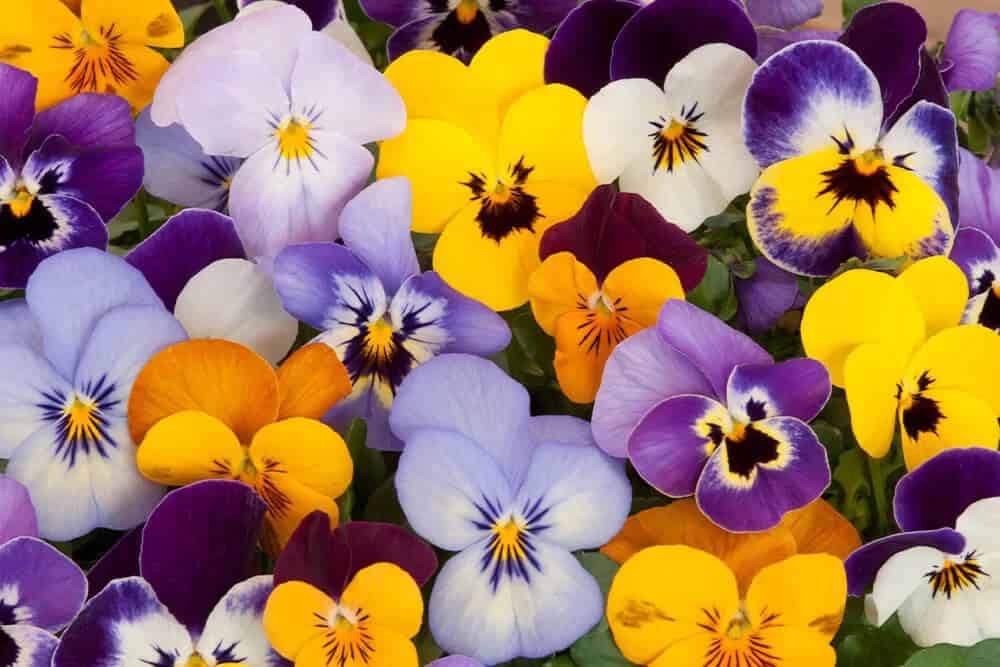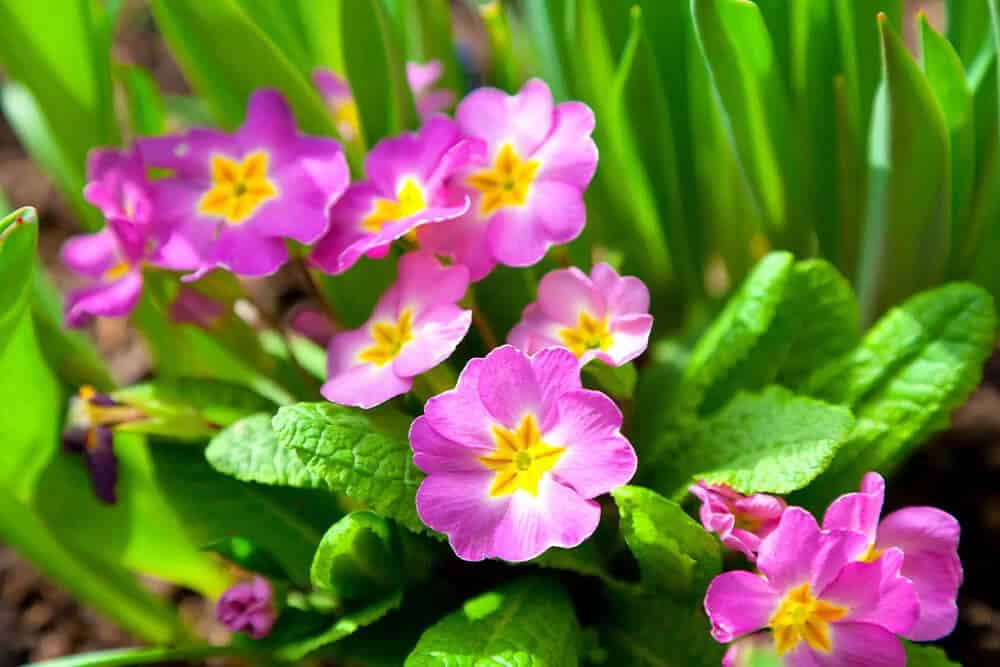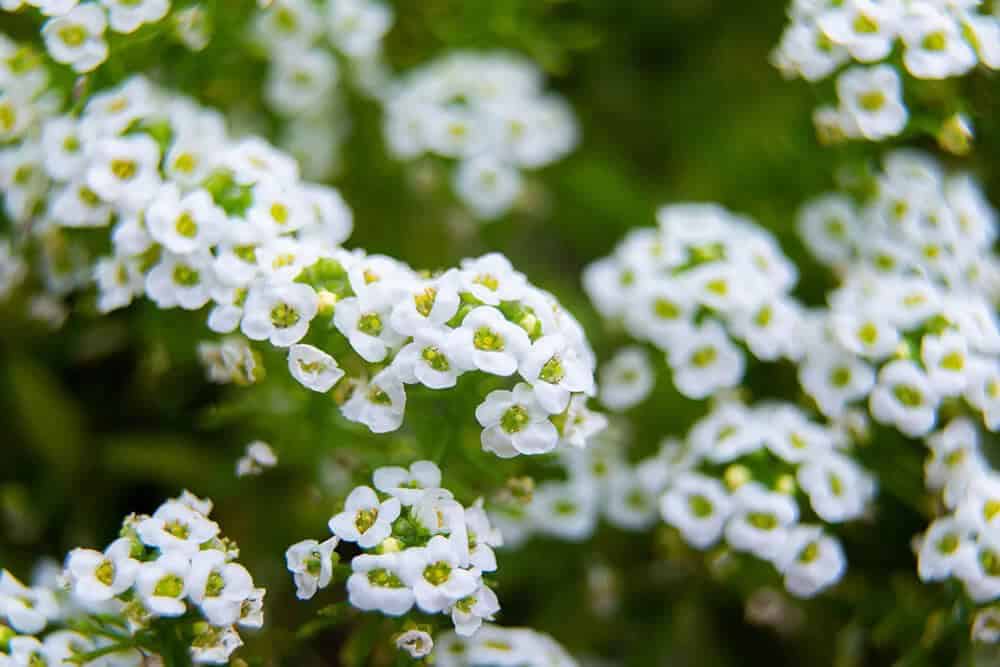Brighten up your outdoor space by discovering beautiful shade-loving flowers that thrive in pots, perfect for gardens with limited sunlight and compact growing conditions.
Key Takeaways
A diverse range of shade flower species from various genera can thrive in pots. Characterized by their varied colors, these blooms come in a multitude of hues. While the majority of them are annuals or perennials, it’s worth noting that they tend to be smaller in stature compared to other types of plants. Beyond their showy flowers, many shade plants also boast impressive foliage, making them a delight for gardeners and observers alike.
13 Stately Shade Flowers for Pots that Make Your Yard More Regal
Astilbe (Astilbe)
Astilbe plants boast vibrant blooms comprising triangular clusters of delicate flowers, often presenting a palette of white and hues ranging from soft pink to regal purple. Notably adaptable, these perennials thrive in shaded environments, where they can be contained within pots. Nevertheless, astilbes are equally at ease amidst varying levels of sunlight and diverse soil compositions.
As such, this flowering perennial offers an attractive planting option for gardeners with shade or those enjoying full sun, making it a versatile addition to any outdoor space.
Begonia (Begonia)
Begonias are a staple in many gardens, offering a burst of color and texture with their vibrant flowers and striking foliage. As one of the most popular flowering annuals, begonias come in a wide range of varieties, each boasting its own unique characteristics. While some may focus on bold blooms, others may prioritize intricate leaf patterns or even a subtle sheen that catches the eye.
The latter is particularly noteworthy, as many begonias feature a waxy texture on their flowers, leaves, or both. This distinctive trait allows them to add an extra layer of visual interest to your garden, especially during those moments when the sun shines its light upon them.
Bleeding Heart (Lamprocapnos spectabilis)
The Bleeding Heart plant boasts an array of fascinating flower shapes among those thriving in shaded or partially sunlit environments. Its unique blooms feature an unmistakable heart shape and striking color combinations, comprising defined white and vibrant pink patches. Notably, this perennial is renowned for its exceptional shade tolerance, allowing it to flourish in a wide range of conditions.
Furthermore, these plants tend to remain compact, making them suitable for smaller gardening containers or even medium-sized pots.
Caribbean Copper Plant (Euphorbia cotinifolia)
While some gardeners focus solely on adding vibrant blooms to their gardens, others appreciate the beauty of foliage just as much. One such example is the Caribbean copper plant, a compact species with striking dark maroon leaves and stems. What’s particularly intriguing about this plant is the juxtaposition between its somber foliage and its bright yellow flowers, which stand out despite being relatively small in size.
Coral Bells (Heuchera)
For gardeners working with limited growing space or those experiencing shade, the coral bells plant is an essential discovery. This compact, low-maintenance plant produces clusters of leaves that hug the ground, giving rise to slender stems bearing delicate bell-shaped flowers. While it can thrive when planted directly in the soil, its diminutive size makes it an ideal candidate for container gardening.
Moreover, it’s a top choice for those lacking sun exposure in their yard, offering a reliable and low-fuss solution for adding some greenery to their outdoor space.
Fuchsia (Fuchsia)
The notion that vibrant flowers thrive solely in areas with abundant sunshine is nothing more than a myth. Case in point: the fuchsia plant, whose stunning blooms defy expectations regardless of sun exposure. Each delicate flower features a one-of-a-kind downward-dangling shape, showcasing an array of deep purple and fuchsia hues. Moreover, these compact plants are surprisingly low-maintenance, requiring minimal sunlight to survive – making them a perfect addition to this list.
Hosta (Hosta)
Hostas are a perennial favorite among gardeners with shady plots, boasting stunning leaves that can be uniformly green or display striking variegation. While many appreciate these plants for their foliage, few realize that hostas also produce charming flowers on tall stems, typically featuring a soft purple hue.
Even if the flowering aspect weren’t a consideration, hostas would still be an excellent choice for shaded gardens due to their unique leaf characteristics, which offer a beautiful backdrop for other plants or serve as a striking focal point in their own right.
Impatiens (Impatiens walleriana)
With their vibrant colors and delicate seed pods that rupture at the slightest touch, impatiens are a beloved choice for many gardeners. The plants come in a stunning array of hues, including white, pink, orange, red, and purple, ensuring there’s an option to suit every color preference. Whether you’re a fan of soft pastels or bold statements, impatiens offer a versatile range of colors to match your unique taste.
For those living in hardiness zone 10 or warmer, the joy of growing impatiens as perennials is within reach. Conversely, gardeners in colder regions will need to treat their impatiens as annuals, still allowing for an abundance of beauty and life-giving blooms.
Jack-in-the-Pulpit (Arisaema triphyllum)
The jack-in-the-pulpit plant takes advantage of the fact that some of the most fascinating flower shapes belong to species that thrive in shaded environments. One of its most striking features is the unique shape of its flowers, which defy easy description. Despite this challenge, we’ll attempt to convey their beauty. Each jack-in-the-pulpit flower begins as a tubular structure emerging from a vertical stem and gradually rises before expanding into a curved flap that envelops the tube’s opening.
Throughout this transformation, the interior of the tube displays a deep, rich purple hue.
Lungwort (Pulmonaria)
While lungwort plants may not be as well-known for their showy flowers, it’s the unique foliage that often steals the spotlight. The leaves of this species are a beautiful light green with striking spots of contrasting colors, earning them plenty of attention within the gardening community. But what really sets lungwort apart is its ability to thrive in shadier areas of your yard, making it an excellent choice for gardeners looking to add some depth and interest to their outdoor spaces.
Additionally, these plants have a hidden charm – their small size belies the fact that they produce tiny, trumpet-shaped flowers in a range of colors, including pink, purple, and blue, which form charming clusters. These underrated blooms are definitely worth getting excited about.
Pansy (Viola × wittrockiana)
Pansies are a staple in many annual gardens, and it’s likely you’ve heard about their impressive blooms. As one of the most popular flowering plants, they thrive when grown directly in the ground or in a garden pot. But what really sets pansies apart is the sheer vibrancy of their flowers. Each bloom can feature multiple hues, sometimes even three or more, creating a stunning display of colors.
From rich purples to bright yellows and fiery reds, pansies offer an incredible array of colors that’s sure to delight gardeners of all ages.
Primrose (Primula vulgaris)
Primrose plants offer a vibrant display of flowers in various hues, typically blooming early in the spring season. Notably, these versatile plants thrive in diverse growing conditions. As long as you maintain routine care, your primrose can flourish even in shady locations. With numerous varieties to explore, including distinct species, one popular and reliable option is particularly well-suited for shaded gardens.
This adaptable plant’s robust health and vitality make it an attractive choice for gardeners seeking a low-maintenance yet visually stunning addition.
Sweet Alyssum (Lobularia maritima)
The sweet alyssum plant wraps up our list with its charming annual display. This low-growing species forms gentle mounds of foliage, comprising bright green stems and leaves, that provide a picturesque backdrop for the abundance of white flowers it produces. What’s more, this adaptable plant is simplicity itself to care for, thriving in a variety of conditions. Its tolerance for different levels of sunlight and a broad range of soil types makes finding an ideal growing location a breeze.
Frequently Asked Questions About Shade Flowers for Pots
Do Begonias Like Shade?
While flowering potted plants that thrive in full sunlight do exist, there’s also a wide range of options for those with shade-dominant yards. One vibrant option is the begonia plant, which demonstrates remarkable tolerance to various levels of sun exposure. However, it’s crucial to note that begonias demand at least some degree of shade, and may even struggle more from insufficient shading than from lack of sunlight.
What is a Good Flower for Pots?
When it comes to selecting flowering plants for pots, it’s essential to consider the characteristics that matter most to you. One crucial factor is the type of bloom you’re looking for. If you want a plant that will continue to provide interest throughout the year, perennials are likely your best bet. On the other hand, if you’re looking for a quick burst of color before needing to be replaced, annuals might be more suitable.
Additionally, it’s vital to consider the mature size of the plant and ensure it will fit comfortably within the confines of your pot. This will help guarantee that your chosen flowering plant thrives in its new home.
How Do You Fill a Large Planter?
When it comes to selecting plants for a large planter, homeowners and gardeners have two primary options: opting for a few larger specimens or filling the container with numerous smaller varieties. The choice ultimately depends on the available space and personal preference. If you decide to go the route of many small plants, it’s crucial to select species that coexist harmoniously in terms of growing conditions while also complementing each other visually.
On the other hand, if you prefer a more minimalist approach with larger plants, ensure that your planter provides sufficient room for the chosen flora to flourish.
Which Hostas Are Best for Full Shade?
Hostas have captured the hearts of many gardeners, particularly those seeking to bring vibrancy to their garden’s shadiest areas. The plethora of cultivated varieties has led to a diverse range of appearances, yet most share similar growth requirements. One commonality stands out: nearly all hosta varieties thrive in shady conditions. As such, pinpointing a single ‘best’ variety for full shade is challenging.
Rest assured, however, that almost any hosta selection will flourish in such environments.
What Flowers Last the Longest in Pots?
When it comes to selecting flowers that thrive in pots, a few key factors come into play. Firstly, plants with ample root space tend to do well, as they’re able to spread out and absorb nutrients effectively. Additionally, flowers that prefer well-draining soil are more likely to last longer, as this reduces the risk of root rot and other issues. Furthermore, many blooms have specific growing conditions that must be met in order to reach their full potential.
Despite these commonalities, there is still a notable difference in the length of bloom time among various species. Take for instance zinnias, geraniums, and chrysanthemums – these flowers are known for being particularly long-lasting when planted in pots.
13 Inspiring Shade Flowers for Pots
Regardless of their light requirements, the plants featured here possess breathtaking beauty and ornamental value equivalent to any other flowering varieties. When confronted with limited sunlight and growing space, take comfort knowing that one of these plants can thrive in your environment, making them an excellent choice for a variety of settings.


